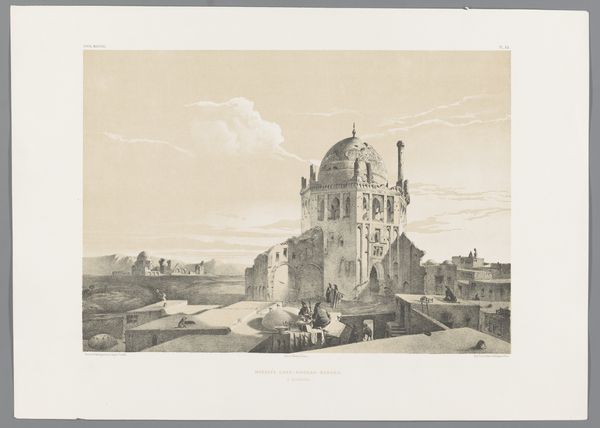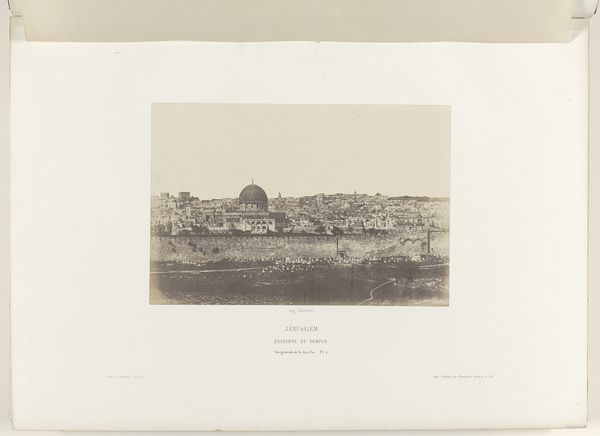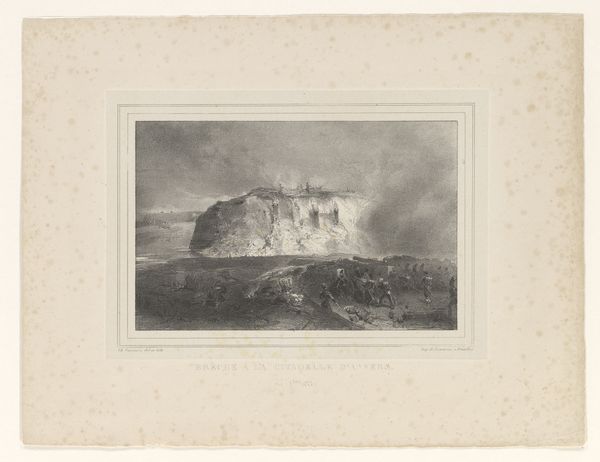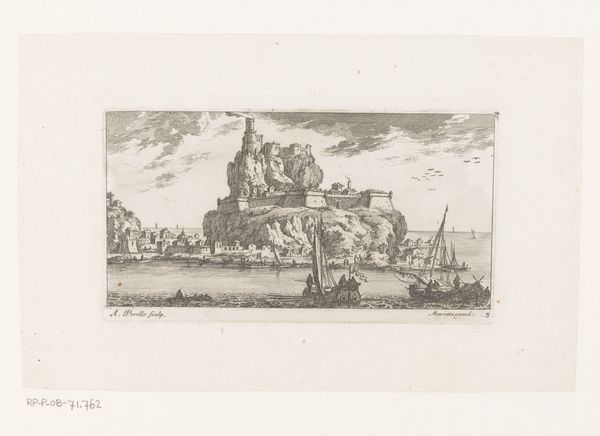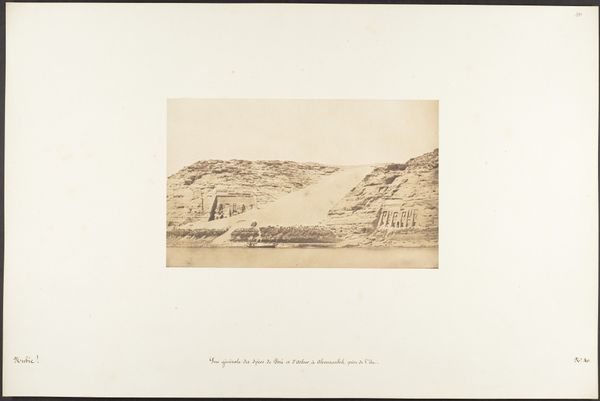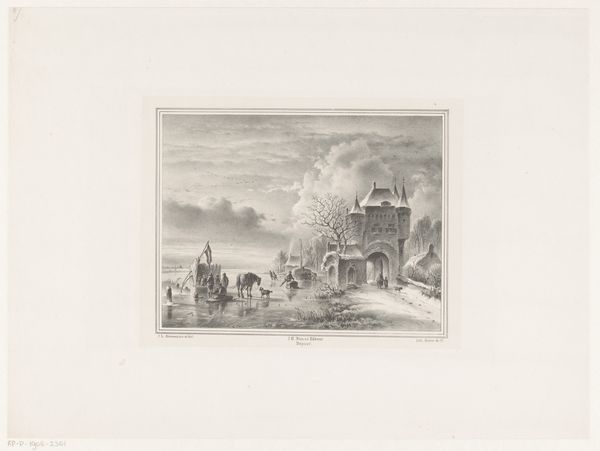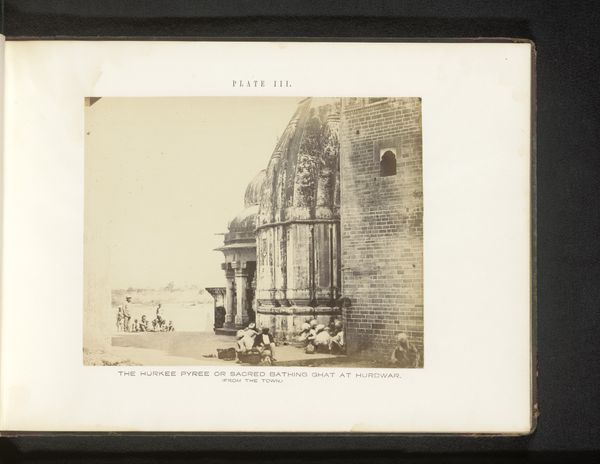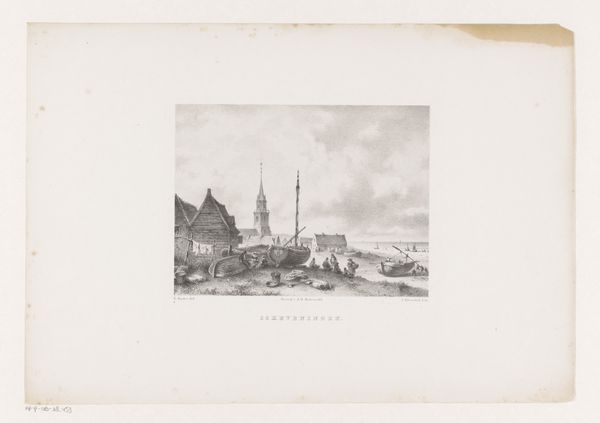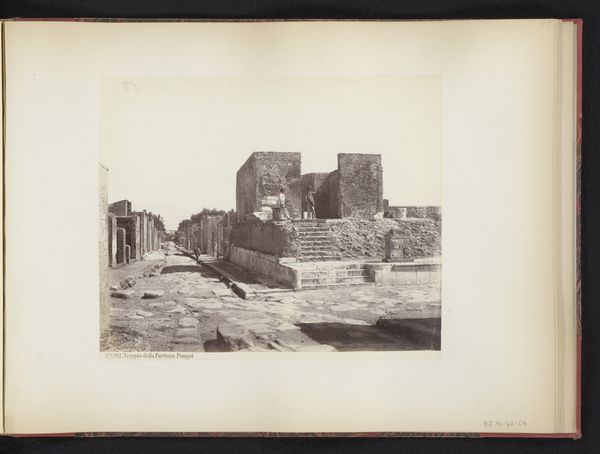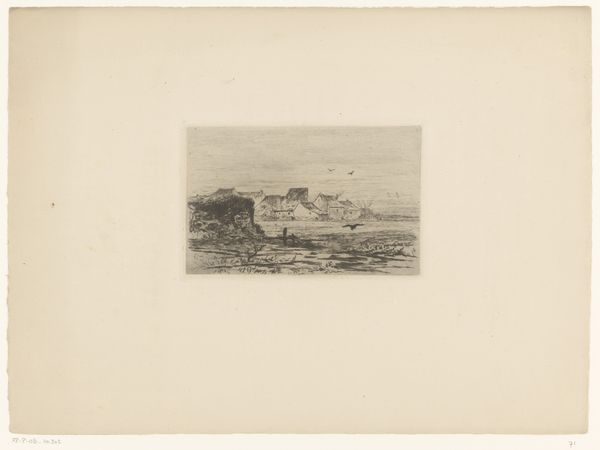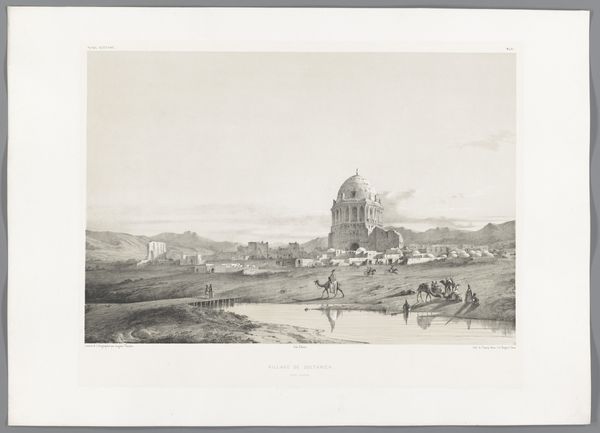
Dimensions: height 290 mm, width 434 mm
Copyright: Rijks Museum: Open Domain
Editor: This engraving, “Zicht op de Mont-Saint-Michel,” by Louis Lebreton, made sometime between 1855 and 1859, presents this famed castle rising from the sea in monochrome. There's a romantic feeling about it. The contrast is beautiful. How would you interpret this work? Curator: This image pulses with centuries of collective memory. What do you see arising from the water? Consider the symbolism of islands. They're often seen as places of refuge, but also isolation. Editor: It seems very much protected. All that stone! A safe haven, yes, but a bit ominous, too. Like it's trying to keep something *out.* Or something *in*. Curator: Precisely. The silhouette of Mont-Saint-Michel against the sky—doesn’t it evoke a certain spiritual striving? Churches and cathedrals often emulate this "reaching to the heavens." Now consider what this says about the people who built it and what the monument represented to them. Is this image primarily about human aspiration or the enduring strength of faith? Editor: Both, maybe? The island is a kind of stage. I hadn’t thought about the “reaching” aspect before. Curator: And what stories do you think that island "stage" has silently witnessed throughout the centuries? It speaks volumes about cultural continuity. What's more important than physical walls is how a single place carries stories and embodies shared experiences across time. Editor: That’s so true. It makes you think about the deeper significance behind iconic landmarks. I see the location with new eyes. Curator: It reminds us that images, like the monuments they depict, can be powerful vessels of cultural memory.
Comments
No comments
Be the first to comment and join the conversation on the ultimate creative platform.
